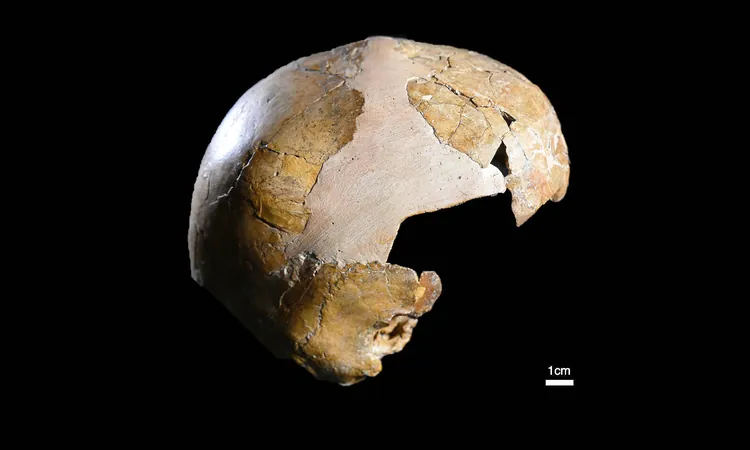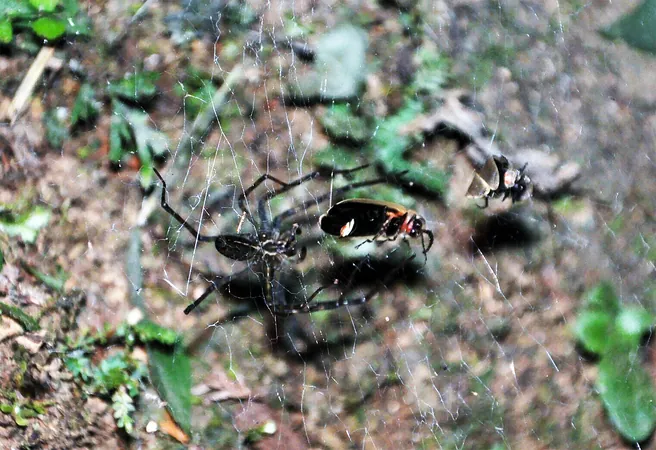
Revolutionary Discovery: 140,000-Year-Old 'Hybrid Child' Fossil Unveils Human-Neanderthal Interbreeding
2025-08-29
Author: Jacob
Unearthing the Past
A stunning revelation has emerged from Skhul Cave on Mount Carmel in Israel—a child's skeleton, discovered nearly a century ago, is now recognized as possibly one of the earliest hybrids between modern humans and Neanderthals. This groundbreaking analysis sheds new light on the dynamics of human ancestry.
A Blend of Features
Researchers have re-examined the skull and jaw, dating back to approximately 140,000 years. The examination revealed a unique combination of Homo sapiens and Neanderthal characteristics, suggesting that this child could symbolize early interactions between these distinct populations.
Leading the Charge in Research
Led by Professor Israel Hershkovitz of Tel Aviv University and Anne Dambricourt-Malassée from France’s CNRS, the international research team utilized innovative imaging techniques to revisit the well-known specimen, affectionately dubbed Skhul I.
Intriguing Traits of the Skhul Child
The analysis highlighted that the braincase reflects the characteristic curved structure of modern humans, whereas the lower jaw lacks a chin and displays dental patterns synonymous with Neanderthals. This absence of a bony chin is particularly significant; it challenges established notions of what defines our species.
Genetic Insights and Implications
“Genetic studies over the last decade reveal a history of gene exchange between these groups,” said Professor Hershkovitz, pointing to the widespread presence of Neanderthal DNA in modern non-African populations, largely stemming from interactions that occurred 50,000 to 60,000 years ago.
Unpacking the Significance
The implications of this discovery are monumental. The Skhul I child is intertwined with the broader story of humanity's migrations and interactions, particularly in the Levant, which appears to be a historical melting pot. The site showcases early intentional burials, hinting at complex social behaviors that transcend rigid classifications of human lineage.
Questions Surrounding Hybrid Status
Despite the compelling findings, some experts remain skeptical. Paleoanthropologist Chris Stringer argues that the material primarily aligns with Homo sapiens, although he concedes that gene flow might be evident. Others caution that the predominant wave of Neanderthal ancestry appears much later than Skhul I's era.
The Quest for Ancient DNA
To clarify the hybrid hypothesis, ancient DNA testing could offer pivotal insights, although such efforts are challenging in warmer climates. Nevertheless, the petrous portion of the temporal bone has shown promise in yielding more ancient DNA, opening new avenues for research.
Future Explorations
The conversation surrounding Skhul I will likely evolve with forthcoming genomic data and broader comparative studies of fossils from the Levant. Re-examining similar material using modern techniques could further illuminate this fascinating chapter of human history.
Conclusion: A Fusion of Lineages
In a world eager to piece together its ancestral puzzle, the Skhul child stands as a testament to the complex interrelationships between ancient human populations. While the anatomy offers hints of a mixed heritage, the definitive answers lie in the realm of genetics.









 Brasil (PT)
Brasil (PT)
 Canada (EN)
Canada (EN)
 Chile (ES)
Chile (ES)
 Česko (CS)
Česko (CS)
 대한민국 (KO)
대한민국 (KO)
 España (ES)
España (ES)
 France (FR)
France (FR)
 Hong Kong (EN)
Hong Kong (EN)
 Italia (IT)
Italia (IT)
 日本 (JA)
日本 (JA)
 Magyarország (HU)
Magyarország (HU)
 Norge (NO)
Norge (NO)
 Polska (PL)
Polska (PL)
 Schweiz (DE)
Schweiz (DE)
 Singapore (EN)
Singapore (EN)
 Sverige (SV)
Sverige (SV)
 Suomi (FI)
Suomi (FI)
 Türkiye (TR)
Türkiye (TR)
 الإمارات العربية المتحدة (AR)
الإمارات العربية المتحدة (AR)